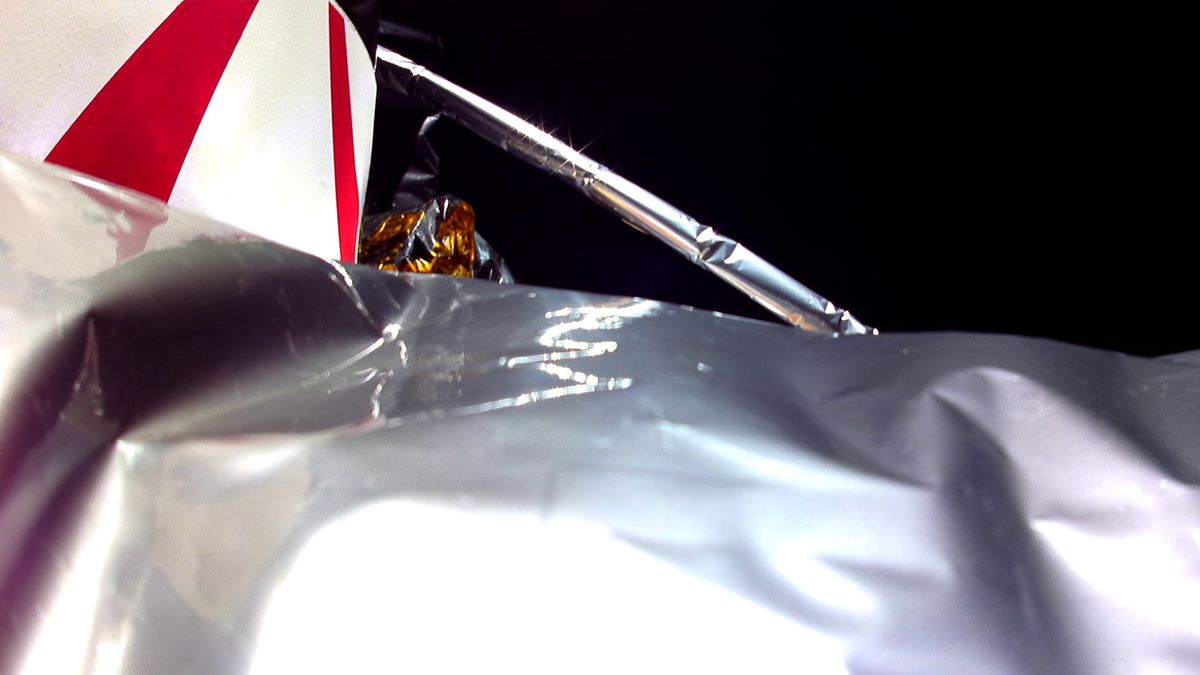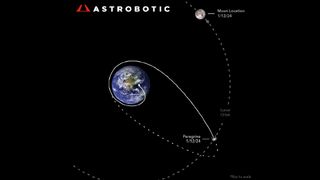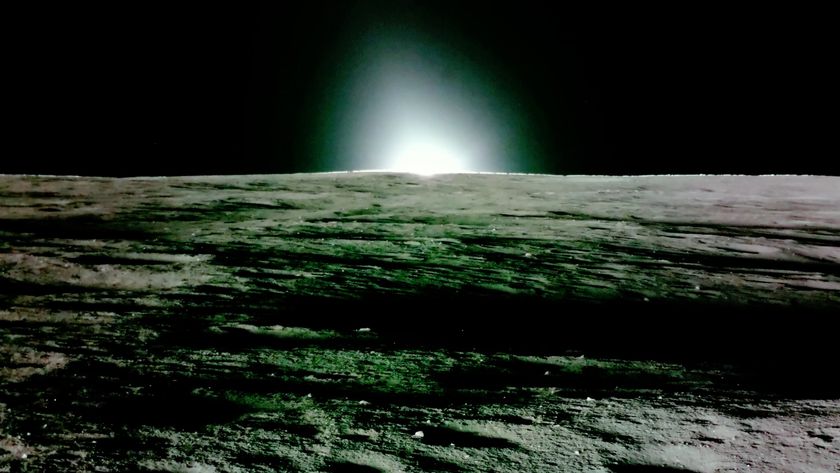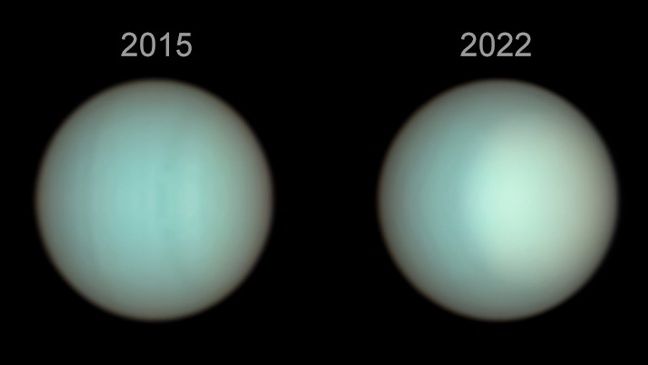Peregrine moon lander aims for 'safe' crash into Earth's atmosphere on Jan. 18
Where it will come down is not yet known.

As the Peregrine moon lander counts down its final hours in space ahead of a crash, the company that made it says it wants to bring it down carefully.
A fuel leak doomed the robotic Peregrine's planned soft landing on the moon next month, following its flawless launch on top of a United Launch Alliance Vulcan Centaur rocket on Jan. 8.
So, rather than the moon, Peregrine will journey back to Earth and fall apart high in the planet's atmosphere on Thursday (Jan. 18). The spacecraft's builder, the Pittsburgh company Astrobotic, pledged "as safe a re-entry path as possible" in an update Tuesday (Jan. 16) on X, formerly Twitter.
"The Peregrine spacecraft continues to be responsive and stable," the update read, emphasizing that the team is watching carefully as the spacecraft returns to our planet. "We remain in contact with our U.S. government partners to ensure as safe a re-entry path as possible."
Related: Private Peregrine moon lander failure won't stop NASA's ambitious commercial lunar program
On Tuesday, Peregrine was flying roughly 183,000 miles (294,500 km) from Earth. That's well within the orbit of the moon, which circles Earth at about 238,000 miles (384,400 km).
The spacecraft's fuel leak had at first suggested a rather short lifespan, but Peregrine remains operational after more than eight days in space, Astrobotic officials wrote in the update. They even managed to do a brief test engine fire on Saturday (Jan. 13) with one of the main engines, firing it successfully for 200 milliseconds.
Get the Space.com Newsletter
Breaking space news, the latest updates on rocket launches, skywatching events and more!
However, Peregrine's fuel-to-oxidizer ratio "is well outside of the normal operating range of the main engines, making long controlled burns impossible," Astrobotic officials wrote in a statement Sunday (Jan. 14).
NASA and Astrobotic plan to deliver a mission update to reporters on Thursday at 12 p.m. EST (1700 GMT).

Peregrine aimed to be the first private spacecraft to land on the moon. It's carrying a variety of commercial payloads and five NASA experiments, as part of the agency's Commercial Lunar Payloads Services program, or CLPS. The commercial payloads include human remains from the companies Celestis and Elysium Space.
CLPS is expected to support science and technology work that aids NASA's Artemis program, which aims to send astronauts to the moon's surface in the 2020s. While Peregrine will not make it to the moon, another CLPS launch is expected shortly; Intuitive Machines will send its own lander aloft aboard a SpaceX Falcon 9 rocket next month.
Join our Space Forums to keep talking space on the latest missions, night sky and more! And if you have a news tip, correction or comment, let us know at: community@space.com.

Elizabeth Howell (she/her), Ph.D., was a staff writer in the spaceflight channel between 2022 and 2024 specializing in Canadian space news. She was contributing writer for Space.com for 10 years from 2012 to 2024. Elizabeth's reporting includes multiple exclusives with the White House, leading world coverage about a lost-and-found space tomato on the International Space Station, witnessing five human spaceflight launches on two continents, flying parabolic, working inside a spacesuit, and participating in a simulated Mars mission. Her latest book, "Why Am I Taller?" (ECW Press, 2022) is co-written with astronaut Dave Williams.











